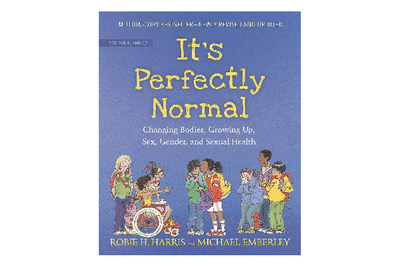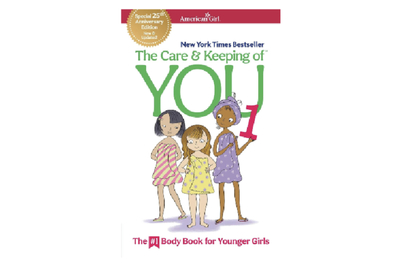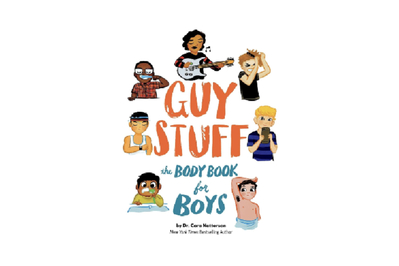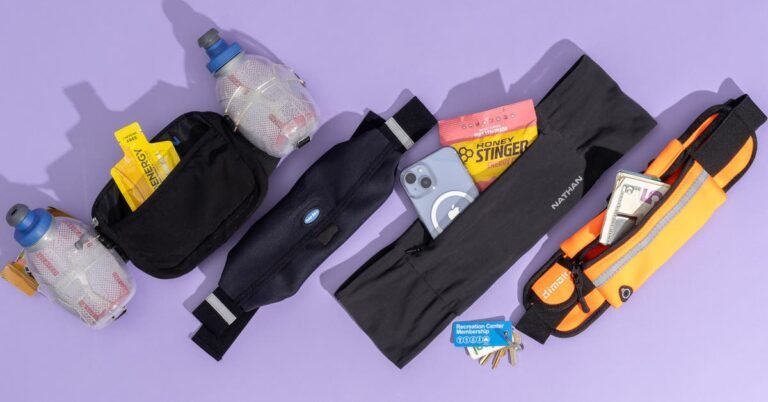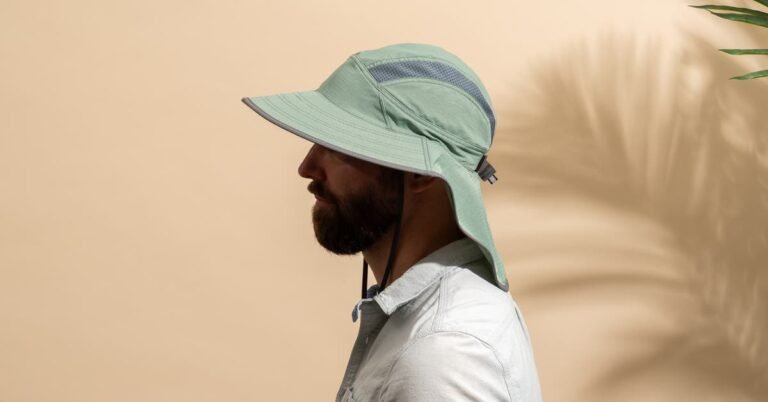
Books can open the door for conversations about your child’s changing body. Whether you place these books directly in your kid’s hands or leave them discreetly on a table, they can be a helpful resource for answering questions a tween may be too embarrassed to ask. Books can also offer additional details and facts for the curious, and they can be a springboard to frank and honest talks. “I definitely recommend parents talk to their kids early and often, and to use these books and resources to start,” says Ivy Chen, a sexuality health educator in the San Francisco Bay Area.
For young tweens, from about 8 to 12 years old, The Care and Keeping of You 1 is a popular classic with plenty of illustrations (this book is the first in the series; there’s also The Care and Keeping of You 2, for kids age 10 and up). Published by the same company that makes American Girl dolls, this book introduces tweens to self-care, including flossing, grooming, and buying their first bra. For those who are about 10 and up, Celebrate Your Body (And Its Changes Too!) is upbeat and conversational, diving deeper into topics such as how breasts develop, how long periods last, and how to manage it all. Guy Stuff: The Body Book for Boys (also published by the American Girl company) offers straightforward, friendly advice on bodily changes and self-care, including shaving.
For an inclusive, all-gender look at puberty, the American Academy of Pediatrics’ You-ology: A Puberty Guide for Every Body covers every aspect of development. Each chapter opens with a fictional story, featuring a diverse cast of six characters who are dealing with real-world scenarios (such as a group of boys in the pool locker room talking about penises).
Though it’s not specifically about puberty, Wow in the World: The How and Why of the Human Body incorporates humor, colorful illustrations, and graphic-novel elements for a fun, general primer on the human body. It addresses the science of pimples and stinky armpits, along with gross, kid-appropriate facts about pooping, farting, and vomiting.
Since it was first published, over 25 years ago, the classic It’s Perfectly Normal: Changing Bodies, Growing Up, Sex, Gender, and Sexual Health has been regularly updated (most recently in 2021). Chen routinely recommends this book, along with its companions, It’s Not the Stork! A Book About Girls, Boys, Babies, Bodies, Families, and Friends and It’s So Amazing! A Book About Eggs, Sperm, Birth, Babies, and Families! for younger kids. The 28-chapter book sends the message that all of these changes to the body are normal. It also covers a lot of stuff that The Care and Keeping of You and Guy Stuff don’t delve into, including masturbation, sex, and sexually transmitted diseases.
Even though these books can provide the facts, tweens and teens also need “human tech support to answer questions and personalize these experiences, like what it feels like to get your period,” Chen says. Talking about hygiene and skin care can be a “lower-stakes” way to start a conversation, building the foundation for more-complex topics, such as sex, relationships, and identity. “It’s crucial to have these talks,” she says.
—Ellen Lee
Source link
[og_img

Books can open the door for conversations about your child’s changing body. Whether you place these books directly in your kid’s hands or leave them discreetly on a table, they can be a helpful resource for answering questions a tween may be too embarrassed to ask. Books can also offer additional details and facts for the curious, and they can be a springboard to frank and honest talks. “I definitely recommend parents talk to their kids early and often, and to use these books and resources to start,” says Ivy Chen, a sexuality health educator in the San Francisco Bay Area.
For young tweens, from about 8 to 12 years old, The Care and Keeping of You 1 is a popular classic with plenty of illustrations (this book is the first in the series; there’s also The Care and Keeping of You 2, for kids age 10 and up). Published by the same company that makes American Girl dolls, this book introduces tweens to self-care, including flossing, grooming, and buying their first bra. For those who are about 10 and up, Celebrate Your Body (And Its Changes Too!) is upbeat and conversational, diving deeper into topics such as how breasts develop, how long periods last, and how to manage it all. Guy Stuff: The Body Book for Boys (also published by the American Girl company) offers straightforward, friendly advice on bodily changes and self-care, including shaving.
For an inclusive, all-gender look at puberty, the American Academy of Pediatrics’ You-ology: A Puberty Guide for Every Body covers every aspect of development. Each chapter opens with a fictional story, featuring a diverse cast of six characters who are dealing with real-world scenarios (such as a group of boys in the pool locker room talking about penises).
Though it’s not specifically about puberty, Wow in the World: The How and Why of the Human Body incorporates humor, colorful illustrations, and graphic-novel elements for a fun, general primer on the human body. It addresses the science of pimples and stinky armpits, along with gross, kid-appropriate facts about pooping, farting, and vomiting.
Since it was first published, over 25 years ago, the classic It’s Perfectly Normal: Changing Bodies, Growing Up, Sex, Gender, and Sexual Health has been regularly updated (most recently in 2021). Chen routinely recommends this book, along with its companions, It’s Not the Stork! A Book About Girls, Boys, Babies, Bodies, Families, and Friends and It’s So Amazing! A Book About Eggs, Sperm, Birth, Babies, and Families! for younger kids. The 28-chapter book sends the message that all of these changes to the body are normal. It also covers a lot of stuff that The Care and Keeping of You and Guy Stuff don’t delve into, including masturbation, sex, and sexually transmitted diseases.
Even though these books can provide the facts, tweens and teens also need “human tech support to answer questions and personalize these experiences, like what it feels like to get your period,” Chen says. Talking about hygiene and skin care can be a “lower-stakes” way to start a conversation, building the foundation for more-complex topics, such as sex, relationships, and identity. “It’s crucial to have these talks,” she says.
—Ellen Lee
Stink! Sweat! Pimples! Cramps! Puberty Is Coming. Prepare Your Kid With These 7 Tools.
[title_words_as_hashtags

